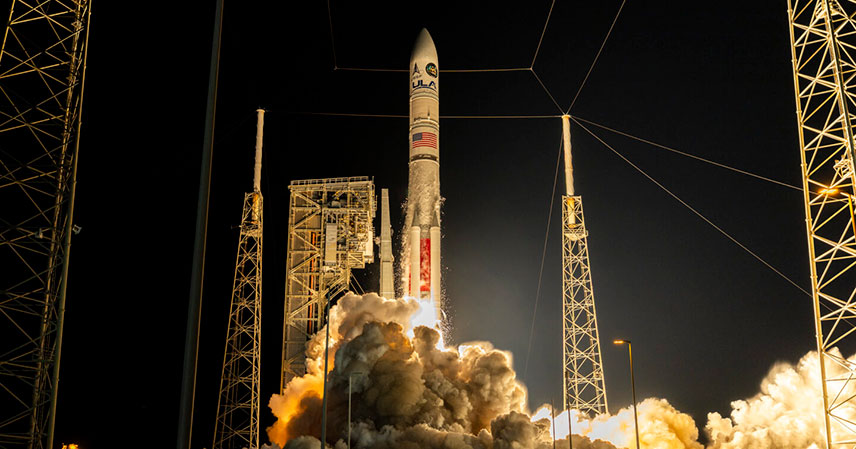Each year, the US Space Force convenes a critical Mission Assignment Board. This board is responsible for distributing contracts for the nation’s most vital national security satellites. The recent announcement of this year’s launch orders has sent clear signals across the aerospace industry. SpaceX emerged as the overwhelming winner in this highly competitive process.
The Space Systems Command, the specific unit tasked with awarding these military launch contracts, made its selections public on Friday. SpaceX secured contracts for five of the seven missions available this year. United Launch Alliance (ULA), a joint venture between aerospace giants Boeing and Lockheed Martin, was awarded the remaining two missions. These high-stakes launches, critical for both the Space Force and the National Reconnaissance Office, are currently slated for execution in the next couple of years.
The Shifting Landscape of National Security Launches 🛰️
The allocation of these contracts underscores a significant shift in the strategic procurement of space services for national defense. For years, ULA held a near-monopoly on these sensitive missions. However, SpaceX’s ascent has fundamentally altered this dynamic. The company’s consistent performance and innovative approach are proving irresistible.
These contracts are not merely about launching satellites; they are about ensuring the United States maintains its critical edge in space. National security satellites are the backbone of intelligence gathering, communication networks, and missile warning systems. Reliable and timely access to space is paramount for safeguarding national interests. The selection process is rigorous, focusing on demonstrated reliability, cost-effectiveness, and schedule adherence.
The missions assigned are complex and often involve deploying multi-billion dollar assets into various orbits. Each launch represents a significant investment and a strategic capability for the nation. The fact that these missions are still a few years out highlights the long lead times involved in space procurement and development. It also emphasizes the forward-looking nature of these strategic decisions.
SpaceX’s Ascendancy and ULA’s Evolving Role 📈
SpaceX’s dominance in this round of awards is a testament to its proven capabilities and a broader trend in the space industry. The company’s Falcon 9 and Falcon Heavy rockets boast extensive track records of successful missions. Their reusability model has also introduced an unprecedented level of cost efficiency. This factor is increasingly important for government contracts.
United Launch Alliance, while securing fewer contracts this time, remains a crucial player. ULA’s Vulcan rocket represents the company’s next-generation launch vehicle. It is designed to replace their highly reliable Atlas V and Delta IV rockets. The Vulcan debuted successfully nearly two years ago. It also successfully launched its first national security mission in August. This achievement is a strong indicator of ULA’s continued commitment to national security space.
Currently, SpaceX and ULA are the only two companies certified by the Space Force. This certification allows them to launch the Pentagon’s most critical and sensitive satellites. This duopoly ensures a degree of competition while maintaining strict quality and security standards. However, the balance of power within this duopoly is clearly shifting. SpaceX’s aggressive pricing and rapid launch cadence offer compelling advantages.
The continued success of both providers is vital for national resilience. Relying on a single launch provider could introduce unacceptable risks. Therefore, maintaining a robust and competitive industrial base is a strategic imperative. ULA’s ongoing development and successful deployment of Vulcan are essential for this balance.
Strategic Implications for US Space Dominance 🇺🇸
These contract awards have profound strategic implications for US space dominance. The ability to rapidly and reliably deploy national security assets is a cornerstone of modern defense. Increased competition and innovation in the launch sector directly benefit national security. It drives down costs and improves access to space.
The Space Force’s decisions reflect a pragmatic approach to procurement. They are leveraging the best available technology and services to meet evolving threats. This includes considering both established reliability and cutting-edge advancements. The trend suggests a future where agility and cost-effectiveness will be increasingly prioritized.
Furthermore, the diversification of launch providers, even within a duopoly, enhances overall mission assurance. If one provider experiences a setback, others can step in. This redundancy is crucial for maintaining continuous access to space. It ensures that critical national security missions can always proceed. The long-term health of the US space industrial base depends on this dynamic competition.
The outcomes of these annual boards will continue to shape the future of military space operations. They dictate which technologies are prioritized and which companies lead the charge. The US aims to maintain its leadership in space. These contracts are a direct reflection of that unwavering commitment.
Key Insights from the Space Force Awards ✨
- SpaceX’s Dominance: SpaceX secured five out of seven national security launch contracts, highlighting its growing influence and competitive edge in the military space sector.
- ULA’s Continued Role: United Launch Alliance won two key contracts, underscoring its ongoing importance and the successful debut of its new Vulcan rocket in national security missions.
- Strategic Imperative: These awards ensure reliable access to space for critical national security satellites, which are vital for intelligence, communication, and defense.
- Evolving Procurement: The Space Force is embracing competition and innovation, prioritizing proven track records, cost-efficiency, and mission assurance in its strategic decisions.
Source: Pentagon contract figures show ULA’s Vulcan rocket is getting more expensive



